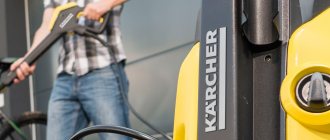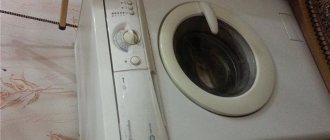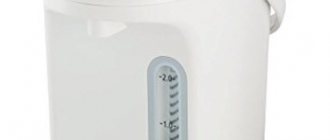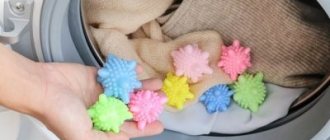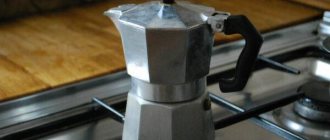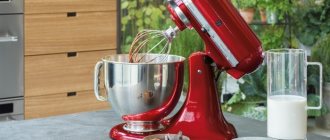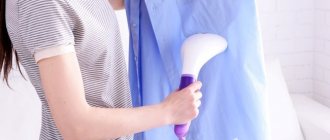Among the many devices created to make our lives easier, there are clothes dryers. Some have already appreciated their advantages and convenience, while others still cannot understand why taking up useful space in the house with a bulky unit. In order for you to form the right opinion, you need to know how a modern clothes dryer works. Having figured out the nuances, you will be able to objectively evaluate all the advantageous aspects of the device and understand the negative aspects associated with its use.
Who needs a dryer?
Many people are familiar with the problem of high-quality drying of clothes.
High humidity, limited apartment space, and frequent washing make it difficult to care for things and textile accessories. You have to hang them in the house or on the balcony, and make sure that a sudden downpour does not disrupt your plans. After this, clean items must be ironed, and this process also takes a lot of time and effort. A clothes dryer will help solve some of the problems, if not all. It will make life much easier if one of the following factors prevents you from using natural drying:
- Small apartment area. Owners of the unit will no longer have to lay out wet duvet covers and sheets in the house or hang them in the bathroom or on the balcony. Literally an hour of work and all textiles will be dried to an optimal condition, ensuring easy ironing.
- No balcony. Sometimes you come across amazing layouts of residential multi-storey buildings that do not have a balcony. A drying machine will save the owners of such apartments from the need to install a bulky dryer in the bedroom or kitchen.
- Frequent washing. Many housewives complain that the laundry does not have time to dry and because of this they have to postpone the next wash. A modern model will dry 3-8 kg of laundry in just an hour. A dryer will become an indispensable piece of equipment in large families.
Such a useful unit will allow you to forget forever about all the difficulties associated with drying clothes. Your favorite outfits and textile accessories will always be at hand.
What is a drying cabinet?
The drying cabinet is a fairly large box with a double bottom or ceiling, where the heating element and electric fan are located. After switching on, dry hot air is supplied to the cabinet. The moisture gradually evaporates and leaves the chamber into the supplied ventilation pipe or into the room where the cabinet is located.
drying cabinet
Inside, the closet is equipped with shelves on which everything that needs drying is placed (including stacks of washed laundry). It also has hangers for large items (the ability to hang coats, jackets, etc. to dry), accessories for shoes and hats. The drying process occurs statically and the items in it are not subject to any mechanical stress (unlike drying in a drum dryer). Thus, the drying cabinet is more suitable for drying clothes that do not require washing, but are simply wet or damp and therefore need to be dried.
Drum dryers
Drum dryers are very similar in size, design and even operating principle to washing machines. The difference is that the dryer drum will circulate hot air rather than water. The drum in the dryer is much larger, because drying requires space, and its rotation is much less. Drum dryers are:
- ventilation;
- condensation
The operating principle of the first type is that moist exhaust air is blown into the ventilation system through a supplied hose. Similar models appear on sale less and less often. They are being replaced by more convenient condensing machines, despite the fact that their cost is higher. These machines do not require special outlet pipes. They are capable of collecting moisture in a specially built reservoir and after each use of the machine, the water from it is poured either directly into the sewer, or you remove the container yourself and pour out the water.
Models of drying machines may differ in modes and types of drying. Some dry by time: you choose the operating time, and after it ends, the machine turns off. Others - up to a certain residual humidity, which is much more convenient. You sort things into those that you plan to iron and those that you plan to immediately put in the closet. Choose the right program and get the desired result. However, you can find a model that combines these two types of drying.
Types of dryers
The general principle of such devices is that they accelerate the natural drying process using a stream of hot air. How exactly this principle is implemented depends on the specific type of unit. Conventionally, they are divided into the following groups:
- Drum dryer . Its design resembles an automatic washing machine, and the main part that does the main work is the rotating drum. Unlike a washing machine, not water is supplied to the drum of this device, but hot air, with the help of which the laundry is dried. In 60 seconds the drum can make more than 100 revolutions.
- Drying cabinet . The dimensions of such a device are quite large, since such a design is a large metal chamber that has either a double ceiling or a bottom with a fan and a heating element. The fan ensures the supply of air masses from the external environment, and the heating element makes the air entering the cabinet hot. Unlike the previous type, this device has a simpler design.
- Exhaust dryer . This is a simple device without a heat exchanger and a container for collecting water. Through a flexible hose, it is connected to the ventilation system of the house, where all the moisture released during the drying of clothes is supplied.
Additional functionality
Important! In addition to the main programs, you need to take into account the presence of additional functions that increase the cost of the device, but significantly simplify operation.
The dryer can be equipped with useful features such as:
- child protection – the option is designed to lock the control panel during the drying process, which guarantees complete safety;
- delayed start – makes it possible to delay the start of work for several hours after loading laundry;
- cooling – ensures that dried items are blown with cold air after the end of the main program;
- drum illumination - will remind you of things forgotten inside the device.
Advantages and disadvantages of electric dryers
Compared to simple traditional designs, electric clothes dryers are characterized by a number of advantages, presented by:
- quick drying of things, which is especially important when there is a frequent lack of free time;
- functionality, the ability to select the optimal mode and some convenient additional functions, including ionization and ultraviolet surface treatment;
- a significant variety of installation methods;
- a variety of models, which can be represented by compact devices or fairly large structures;
- high quality of drying and absence of unpleasant odor in dry laundry.
The imperfections include the need to connect to the electrical network and quite significant costs for paying for electricity during regular use of the device. Among other things, violating the operating rules can cause a burn.
Some electric models are characterized by impressive dimensions, which can complicate the process of choosing a place for placement, therefore, in limited spaces, it would be preferable to use a compact simple clothes dryer.
How do tumble dryers work?
They come in several types, but have a similar design and operating principle. So, let’s take a closer look at what drum dryers are in general.
Device
To understand the principle of operation of the unit, you should first familiarize yourself with its design. As a rule, it consists of the following elements:
- control panel, which contains an electronic display, drying mode selector, auxiliary function buttons;
- drive belt that connects the motor to the tank;
- drying drum in which things are dried; Modern electric dryers have a tank light, which allows you to monitor the condition of your laundry and also makes loading and unloading easier.
- an electric motor and a heat exchanger, in which cold and hot air flows move through two channels, due to which the air is cooled and condensate is subsequently released;
- heating element (heating element), which heats air masses before they enter the drum with things;
- a fan that captures cold air masses and sets them in the right direction after warming up;
- a container for collecting condensate, which can be located in the lower or upper part of the panel, where the powder receiver is located in washing machines (water must be drained from the container regularly so that new condensate does not spill out);
- air intakes with fluff filters that absorb dust and particles of debris that come with air flows (filters should be cleaned at least once a month).
A detailed diagram of the unit is shown in the figure:
Inside the drum
As a rule, the dryer drum is made of stainless steel, and more modern models have a honeycomb structure that promotes the formation of a thin air cushion between the laundry and the walls of the drum. This makes drying very gentle, so even the most delicate items can be tossed into the drum.
Manufacturers also pay great attention to the shape of laundry grips. These are the mixing ribs inside the drum. For example, in some models, when drying, they move along a trajectory that resembles the number “8,” which contributes to the economical operation of the device’s motor. There are models with periodic reverse rotation, but their motor is subject to greater loads during operation.
Drying can be done at different speeds - from 50 to 100 rpm. So, when drying jeans, you can set the maximum speed, but delicate items require a more gentle mode - no more than 60-70 rpm.
Principle of operation
Tumble dryers work on the following principle:
- The air passes through fluff filters and is directed by a fan to the part of the device in which the heating elements are located.
- The air is heated using a heating element, and the heating temperature varies from 50 to 70 degrees.
- After heating with the help of a fan, the air is directed into the main element of the dryer - into the rotating drum.
- Hot air removes moisture from wet laundry and then falls to the heat exchanger.
- In the heat exchanger of the device, the air gets rid of unnecessary moisture and cools down.
- The cooled air again begins to move towards the heating elements and repeats the entire process of its “movement”. Thus, there is a continuous circulation of air masses, which allows the laundry to dry.
The described device operates from the network and its power per cycle is 4 kW. Over the entire period of drying clothes, power consumption can range from 1500 to 2300 W, depending on the model of the household appliance and its manufacturer.
How to use?
There are different models of dryers, but they are all operated according to the following instructions:
- Load laundry . It should be pre-wrung in a washing machine or by hand. It is important that the volume of laundry matches the capacity of the device.
- Set mode . The choice depends on the material of the clothing. In addition, you can set the drying time and the residual moisture level of things.
- End the cycle . You need to take out the laundry and iron it or put it in the closet, depending on the degree of humidity.
- Remove debris from fluff filters . This procedure should not be ignored, otherwise filters clogged with debris will not be able to pass air masses properly, which will certainly affect the quality of drying.
- Get rid of condensation . Once the drying cycle is completed, you need to take out the condensate container and pour out all the water. If the system is drainage, then moisture will enter the ventilation system on its own, so nothing needs to be removed.
Subsequence
The sequence of actions when working with electric dryers is quite simple and does not differ much in different models. Below is a general principle of working with machines of any model.
- Things are loaded into the dryer. Please note that all laundry should be damp, but never wet. Therefore, before loading, all items must be wrung out in the spin mode of the washing machine.
- Select the desired drying mode. You need to decide whether to choose a drying time or drying clothes made from a certain type of fabric.
- After drying, it is necessary to determine the moisture level of the items. In case of poor drying, you must load the laundry again (no earlier than after 40 minutes) and select the drying mode. You may need to dry things differently.
- Clean the lint filters. Otherwise, poor airflow and, as a result, poor-quality drying are possible.
- Empty the siphon.
Types of drum dryers
As noted earlier, drum dryers, in turn, are divided into several main types, each of which can be found below.
Condensation
Such machines are in greatest demand because they do not require special installation conditions. This is due to the fact that they are equipped with a special container where moisture accumulates after drying. In order for the machine to work properly, this container must be periodically cleaned of water. It is best to do this after each drying cycle.
After loading the tank, selecting the drying program and pressing the “Start” button on the control panel, the drying process starts according to this principle:
- The air in the chamber heats up, and the drum rotates in parallel and mixes the laundry.
- Air heated to the specified temperature blows on the laundry, under the pressure of which moisture leaves it.
- The moist air passes through a heat exchanger where it is cooled and dehydrated.
- The resulting water is accumulated in a special reservoir, and the cooled air is again heated by a thermoelectric heater and blows on the laundry again.
You can clearly see the operating principle of such a dryer in the diagram:
Condensing machines may also have a drainage system. In this case, the condensate will drain into the sewer system on its own.
Modern models of such dryers are often equipped with an additional “steam smoothing” program. In this mode, before starting work, water is “sprayed” in the drum, and then the smallest droplets form a small cloud. When exposed to high temperatures, it turns into steam, which helps smooth things out.
Electric dryers with heat pump
The design of such a machine provides for the presence of a cooling circuit. It intensively cools the air flow, thereby promoting faster condensation formation. This reduces the time required to dry laundry.
Ventilation
Such machines are considered obsolete, although they are still found on sale. They have the simplest design compared to other drum-type models. Their difference lies in the fact that they involve exit through a special hose into the ventilation passages. Thus, the installation of such a unit requires additional installation work.
You can clearly see the operating principle of ventilation dryers in the diagram:
What to look for when purchasing
When purchasing a dryer, you should consider the following parameters:
- How many loads does the model require, less than 8 kg of laundry and more loads.
- Appliances of categories A and B are the most energy efficient if the amount of electricity consumption is important.
- The power depends on how quickly the laundry will dry without wasting time on the wiring to withstand the load.
- Combining laundry depends on the rotation of the drum, i.e. if it rotates in one direction, the clothes roll into a ball, and if it rotates in both directions, it does not get lost and the motor is not overloaded at the same time.
- Consider draining the water and emptying the tank in condensing units.
Like any other technology, tumble dryers are not without their drawbacks.
How does a drying cabinet work?
The space inside such a dryer is organized according to the same principle as in a regular wardrobe for storing clothes. Such a device is a fairly large metal chamber with a heating element, which is responsible for heating the air, and a fan, which sets the direction of the air masses.
For the device to start working, you need to put things inside the closet on shelves or hang them on hangers, and then select one of the programs on the control panel and click on “Start”. The machine then operates in this order:
- Inside the cabinet, the air is heated by the heating element.
- The fan directs circulating air onto the items, creating the airflow necessary for drying.
- Things dry out under the influence of warm air, and moisture comes out along with the exhaust air masses. If the drying cabinet is located in a living room, it is worth either ventilating it or ensuring that humid air is removed from the room.
Drying cabinets are much cheaper than drum dryers, but they are larger and less convenient to use, and therefore are in less demand.
Crayons and candies left in children's clothing pockets
Shutterstock
Of course, things get a lot more complicated when you have kids who leave God knows what in their pockets. Well, who, tell me, has time to rummage through every pocket when small children are running around underfoot? However, as tempting as it may be to just throw all the clothes you've collected off the floor straight into the wash, it's not such a good idea.
If there are easily meltable items in your laundry, such as candy, wax crayons, or chewing gum, they will not only leave stains on your clothes, but they may also cause a fire. Considering that children are already a potential fire hazard, both literally and figuratively, there's no need to add a "dryer fire" to the long list of fires that need to be put out. We advise you to take the time to carefully check children's pockets and take out all the prohibited items.
Drying types
Regardless of the type of design, dryers offer three main types of drying.
By time
The simplest type, according to which a person simply sets the drying time, after which the work cycle ends. The downside is that it is not always possible to correctly determine the drying time of things, so they may remain damp or dry out.
By degree of humidity
In this case, a person chooses the degree of residual moisture of things. The machine has built-in sensors that detect the air humidity inside the drum or cabinet and stop drying when the desired degree is reached.
This type involves two ways to control humidity. The first and most popular way is to select one of three modes, which look like this:
- optimal humidity for ironing clothes (things remain under-dried);
- drying in a “cupboard” (things dry almost completely);
- completely dry.
Modern models may have a second method of humidity control, which is carried out in this order:
- Current is passed through things.
- As long as things are wet, the circuit is closed.
- When things dry, the circuit opens and drying stops.
By type of clothing
In this case, a person chooses not the type of fabric, but the type of clothing that needs to be dried. For example, it could be jeans, shirts or outerwear. It is worth noting that some modern models also allow you to choose the type of fabric. They are more expensive, but more practical, because you can dry even the most delicate things in them without any fear, simply by choosing the right mode.
Some models are equipped with a special shelf-basket in which you can dry shoes, soft toys, etc. in a static position. Super- or extra-dryers are also available, which require high temperatures for blowing thick and multi-layered fabrics.
Selection by location
It is important to choose a dryer, taking into account not only personal preferences, but also the main features of the room. Vertical dryers are very popular, they are compact and can withstand about 8-10 kg of washed laundry, but depending on the method of fastening, the models can be wall-mounted, floor-mounted or ceiling-mounted.
Wall models
The best option is to place the device even on small balconies or loggias. Most often, such devices are about a meter wide and are designed to dry no more than 15 kg of laundry.
Wall dryer
The main advantage of wall-mounted models is absolute ease of use. However, the device requires the installation of a special waterproof socket and is used exclusively by a small family.
Floor-standing
Traditional floor-standing models are the most popular and sought-after dryer option due to their mobility and compact design. Among other things, such modern devices are reliable and safe, and accidental contact does not cause burns due to the high-quality insulation of the heating elements.
Floor dryers
Ceiling
Electric ceiling systems for drying clothes are attached to the ceiling and installed exclusively on glazed balconies or loggias.
Thanks to hot grates, drying occurs as quickly as possible.
Standard models are 100-120 cm long and can hold up to 30-35 kg of wet laundry.
It is important to remember that when choosing an electric clothes dryer for a balcony or glassed-in loggia, it is advisable to give preference to wall-mounted or ceiling-mounted models, and for drying delicate fabrics, designs with a thermostat are optimal.
Some models allow you to dry hats and shoes and even ionize the air using a built-in ultraviolet lamp. In any case, drying must correspond to the interior and style of the room in which the device will be installed.
Washing machines with drying function
The operating principle of such a washing machine is no different from the operating principle of a drum dryer. However, it should be taken into account that the laundry in such a unit will have to be dried in two approaches. The fact is that in such washing machines the drum volume is not large enough, so it will not be possible to dry all the washed clothes at once. So, it will need to be divided into two parts and dried twice.
The service life of a washing machine with a clothes drying function is much shorter than that of individual devices, and the cost is much higher, so it makes sense to consider purchasing two different machines - for washing clothes and for drying them.
Determining the maximum load
It is important to pay attention to one of the main characteristics of washing machines - the maximum load of laundry. This is the weight of dry items you can wash at one time. Overweight can increase drum vibrations during spinning, which can lead to rapid wear of internal mechanisms and machine breakdown.
Maximum load options:
- 3–4 kg - for a person who lives alone. A washing machine with this load capacity is also suitable for those who wash clothes almost every day in small quantities.
- 5–6 kg - for a family of two or three people.
- 7–9 kg - for a family with two children.
- 9–12 kg - for large families and people who do a lot of laundry in large batches.
If you wash pillows, blankets, blankets and bulky clothes yourself, you should take a closer look at models with a large drum. At the same time, the machine does not have to be full-size: it can be narrow, but with increased height.
Haier's line of washer dryers includes Super Drum models with a wide hatch and increased drum capacity for convenient loading of large items.
Some modern machines can weigh a load of laundry. The device will tell you if you overload it. All Haier models have an auto-weighing function.
Differences between budget devices and premium and mid-range devices
from expensive electrical appliances for drying clothes and models from the mid-price segment in their range of functions, number of programs and design .
a dryer often depends on the reputation of the manufacturer , which has been producing its products for many years or has recently appeared on the household appliances market.
Having studied the cost of dryers from different price categories, we can draw the following conclusions:
- the average price of budget models is 20,000 – 30,000 rubles;
- you can purchase a device from the mid-price segment for 35,000 – 50,000 rubles;
- expensive devices will cost the buyer approximately 60,000 - 75,000 rubles.
Popular manufacturers
Remember! Many popular manufacturers of household appliances offer customers functional models of dryers.
It is quite difficult to choose just one device, so it is worth checking out the list of the best brands and designed electrical appliances that have become the best-selling ones. Among them:
- Bosch. A leading German brand under which various household appliances are produced, known for their reliability, quality of assembly and materials, as well as high technical characteristics. From the many models of drying machines offered by the manufacturer, experts highlight:
- WTW85469OE;
- WTH83000OE;
- WTW876H0OE;
- WTM83260OE.
- Gorenje. A Slovenian company that is one of the seven best manufacturers of home appliances. Users especially liked such multifunctional devices from Gorenje as:
- DS94ILS/I;
- DE82;
- DA82IL;
- D98F65F.
- Electrolux. The largest Swedish manufacturer of household and professional appliances, which has won the trust of customers with high-quality products. The best Electrolux drying machines are:
- EW6CR527P;
- EW6CR428W;
- EW8HR258B;
- EW9W161B.
- Hotpoint-Ariston. An Italian company that has been producing large and small household appliances for many years. The leading positions in the ratings are occupied by the following models of drying machines:
- FTCD 97B 6H (EU);
- AQC94F5T/Z1;
- WDG862;
- AQC9BF7TEU.
- Beko. A Turkish company that has established itself as a high-quality, reliable and affordable brand. Among the variety of devices developed by the manufacturer, the following models stand out:
- DU7111PA;
- DS8433RX;
- DPS 7205 GB5;
- DB7111PA.
- Siemens. A German concern specializing in the production of electronics, home appliances and medical equipment. According to the owners, several functional models deserve increased attention:
- WT45W561OE;
- WT45RV20OE;
- WT47Y782OE;
- WT47W561OE.
Dryer Operation
There is nothing complicated about using clothes drying machines. To know how to use them, read the summary below.
- Loading laundry. Its quantity should not exceed the capacity of the equipment.
Clothes must first be wrung out in a washing machine or by hand.
- Selecting a program depending on the material of the clothing.
Conventionally, programs are also divided into drying by time and by the residual level of moisture of things.
- End of the cycle. The dried laundry, taking into account the degree of its humidity, is sent to the closet or ironed.
- Removing lint from lint filters. The procedure is mandatory and cannot be ignored. Because filters clogged with dust will not be able to pass air properly. As a result, the equipment will not dry things well.
- Getting rid of condensation. After the end of each cycle, you need to remove the condensate container and pour out the collected moisture.
The next drying cycle can only be started after a 40-minute break.
Now you know how dryers work and what they are needed for. And as it turned out, using them, in some cases, is even easier than washing devices.
There is no doubt about the practicality and usefulness of dryers. After all, household appliances that make a housewife’s homework easier simply cannot be useless.
Clothing and home textiles covered with cat or dog hair
Natalya Chumak / Shutterstock
As tempting as it may be to simply throw clothes with stuck-on cat or dog hair into the wash and get it over with quickly, it's not a good idea. Over time, all the pet hair gets caught in the lint trap or vent, resulting in longer drying times and a potential fire hazard.
Therefore, for your safety, as well as to save the contents of your wallet, use a lint remover first - a sticky roller, for example, to remove wool from clothing before placing it in the machine to wash and dry the laundry.




